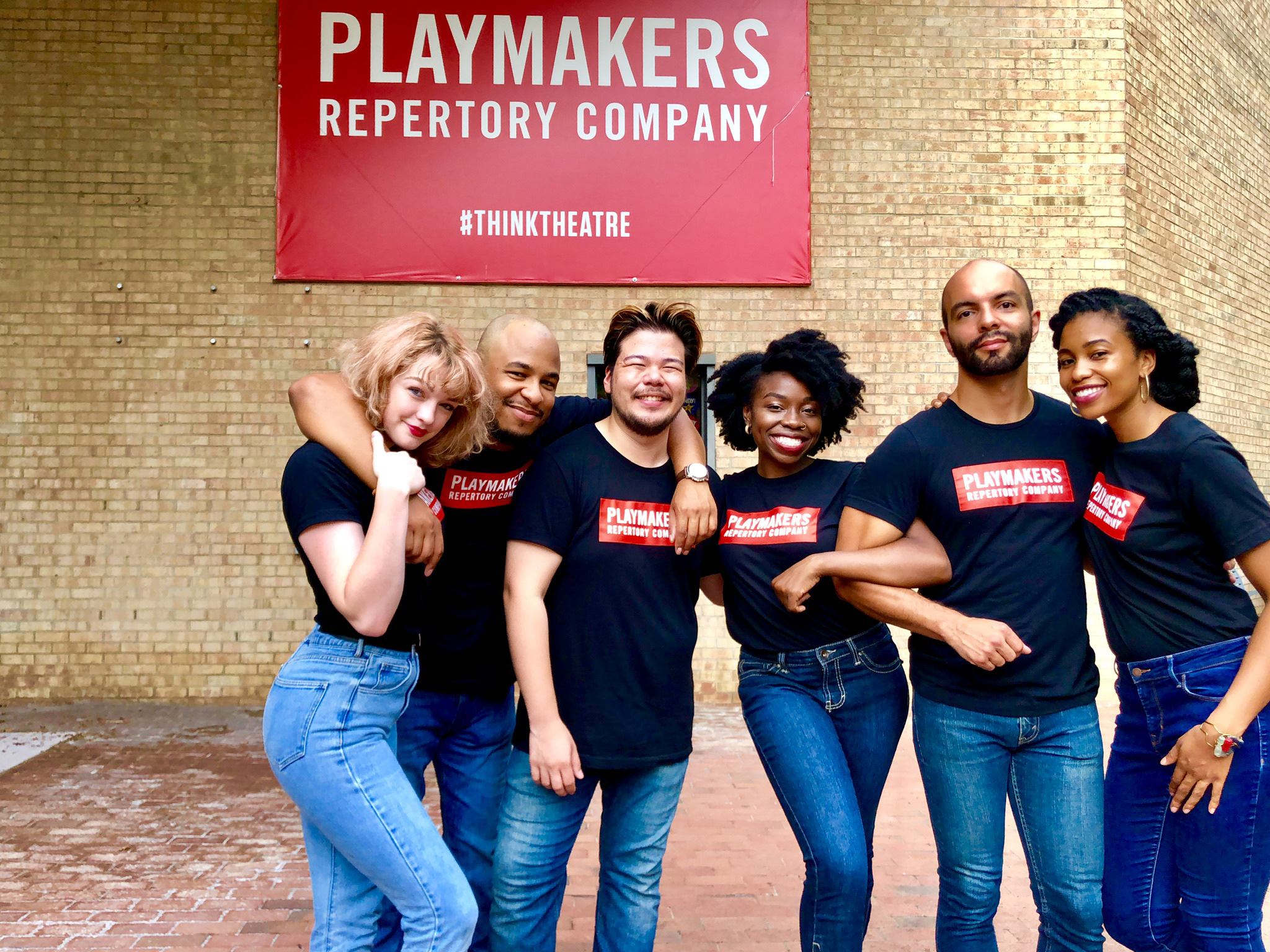First-year MFA students in Gwendolyn Schwinke’s spring voice and speech class used their acting skills for good to produce an online album of international folk tales for UNC Children’s Hospital.

When the pandemic forced faculty members to pause in-person teaching midway through the spring semester, Gwendolyn Schwinke was determined not to let COVID-19 put a damper on creativity. But she was faced with a real challenge — how to give her acting students a meaningful outlet to practice their skills.
Schwinke is a David G. Frey Fellow in the department of dramatic art and one of two resident vocal coaches for PlayMakers Repertory Company. She was also the vocal coach for PlayMakers’ spring production of Julius Caesar, which had to shut down shortly after opening night. Many of the students in her first-year MFA class in voice and speech were also involved in that production.
“I wanted to pick a project that would serve my students’ need for career development as emerging theater artists and also fulfill a need for the community,” said Schwinke, who just completed her first year of teaching in the Professional Actor Training Program at UNC. “I love to listen to stories and podcasts, and it occurred to me that if I were stuck in a hospital, that would be something I’d want to do. I’m also always interested in finding ways to make theater available to a broader audience.”
Schwinke wanted the project to have a global focus, with inclusive and diverse stories represented.

The result is the SoundCloud album, Ram’s Tales: Folk Tales from Around the World, performed by the six actors in her class. The project was produced for UNC Children’s Hospital but is available to anyone.
Creativity and community
The students were encouraged to choose their own folk tale, using works in the public domain. Project Gutenberg, a library of over 60,000 free books and stories, proved to be a good resource.
Sergio Mauritz Ang, a native of Manila, Philippines, chose a series of three Filipino folk tales — “The Man with the Coconuts,” “The Carabao and the Shell” and “The Alligator’s Fruit” — for his soundtrack. He tapped into some of his storytelling skills from a previous job teaching preschool kids in New York.

“My artistry is rooted in my culture and who I am, so the environment and the imagery created in these tales really brought me back home,” he said. “There’s something powerful about the human voice and how you can manipulate it. It was great practice in learning to love my own voice and appreciating what I sound like.”
Students also had to develop voices for some of the characters in the story. But what does an alligator sound like? Or water? Or the sun?
AhDream Smith faced that challenge in creating voices for her Southern Nigerian folk tale, “Why the Sun and the Moon Live in the Sky.” She tapped into a deeper, more resonant voice to represent water.
“When I thought about water as a whole, I don’t think people realize the power and force of water. The reality is the ocean is vast and deep with many layers,” Smith said. “That contrast I thought would work well with the sun being a little more high-pitched.”
Smith said the service-learning component of the audio project and working on something with her fellow acting students provided an added bonus. She also took the group photo that is used on the album cover.
“It gave purpose to the project, which is always easy for artists to get behind,” she said. “It became less of a class assignment and more of an offering to the world, which was exciting.”
Painting pictures with sound
Schwinke turned to her friend and colleague, PlayMakers’ resident sound designer and engineer Brandon Wayne Reed, for technical help in pulling the album together.

Reed participated in her class via Zoom and coached the students on how to set up proper audio equipment (many used their iPhones) and a soundproof space (sometimes a closet works) as well as how to use open-source audio editing and recording software.
He set up private meetings with the actors to discuss how they envisioned the overall soundscape and emotional feeling they wanted to get across in the folk tales. He strove to make the sound effects authentic.
“Each actor was also the director of their own production, and I asked them about the emotional context of each folktale and how they imagined the world of the folktale to sound,” Reed said. “Without sets or costumes and a physical world to look at, we wanted to make a well-crafted soundscape that would help enhance your imagination.”
Reed, who did this work while being furloughed from PlayMakers, said it helped to fulfill his own desire to be creative “without going insane.”
“A lot of us at PlayMakers have been thinking: What can we still do during these times of quarantine to bring entertainment to the community?” Reed said.
Lalomania: an abnormal love of speech and talking
As an actor, how can you effectively convey a story when people can’t see you performing?
“Even when an actor can use their body and gestures and they have sets, props and costumes to support their performance, their voice still needs to reflect what they are thinking and feeling in an uncrafted and spontaneous, way,” Schwinke said.
And whether it’s Julius Caesar or a story about a hippopotamus, students need to understand the text and how to most effectively convey that to an audience, she added.
Schwinke’s SoundCloud site is appropriately called “Lalomania,” which means an abnormal love of speech and talking. She said her pandemic-induced project lit a spark in her as a faculty member to expand the idea to theater and university partners outside UNC.
“I have a collaborative relationship with a theater company in India, for instance, and they are interested in doing some stories, so this is just the beginning stage,” she said. “Wouldn’t it be great if people all over the world got to listen to these stories and maybe even in multiple languages?”
In addition to Smith and Ang, first-year MFA students Anthony August, Tori Jewell, Khalil LeSaldo and Omolade Wey participated in the Ram’s Tales project. Listen to the album at https://soundcloud.com/gwendolyn-schwinke.
By Kim Spurr, College of Arts & Sciences
